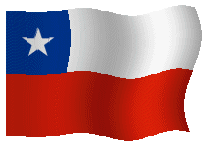
THE HOME WINE COURSE ©
Introduction:
Chile is South America's other great producer of fine wines (following Argentina of course). While Chileans can't equal Argentina's massive productive capacity they can certainly boast that their wines are of equal, and arguably better, quality. Chile, along with Argentina, is probably best known for producing some of the world's best value premium wines. Experienced French vigneron advice along with excellent French vinifera grape types served to shape the modern wines being made in the country today. Due in part to falling wine consumption levels in Chile we in the United States are also blessed to receive the best of Chilean viticulture at some ridiculously low prices. There are now several major American, French, Spanish, and Italian wine companies now in Chile taking advantage of low labor costs and very consistent weather patterns ideally-suited for first-level wine production.
Levels of Quality
Chile has long produced wines that have been perceived as value-priced at medium to above-average quality. This image suffered somewhat during the non-supportive Marxist period of the early 1970s. Since then Chile's Ministry of Agriculture has followed to a significant degree the European example of governmental regulation regarding delimited areas of production, approved varietals, reduced yields, and qualified Reserve and Grand Reserve designations. This helps to validate the 60+% of Chilean wines that are exported to distant world markets. Some confusion exists in these export markets however when very little price difference is established between the various levels of quality offered by a particular producer. It is not uncommon for a Chilean winery's most humble wine to be separated by only a few dollars from its most special Reserve bottling. Other indicators of top quality include estate-bottled designations and proprietary wines, such as the Casillero del Diablo wines made by Concha y Toro, or Primus, the Veramonte Meritage blend.
Grape Types
Of the nearly 300,000 acres under vine in Chile fully 70% is planted to red wine varieties. Ordinary red grape types (called corrientes) include the País, Carignan, and Muscat Romano. The noble reds (called finas) are well known to the American public. Among the finas we have the Cabernet Sauvignon, Merlot, Carmenere, Malbec, and small plantings of Petit Verdot, Syrah, and Pinot Noir. Cabernet Sauvignon dominates the viticultural landscape in the best vineyard districts of Chile. These wines come remarkably from pre-phylloxera rootstock, spend time in French oak, and (despite their unusual green/herbaceous streak) can easily be mistaken for red Bordeaux. Chilean Merlot is also now in fair demand at prices typically in the $6 to $10 range. Blends of Cabernet/Merlot are not as common as is found in other regions of the world but they can be found from various producers. The real star for Chilean reds is the obscure Bordeaux varietal called Carmenere, softer than Cabernet and more complex than Merlot - great when blended as well. White corrientes include the ubiquitous Muscat (from which Pisco brandy is made), the Torontel (Torrontes in Portugal, Argentina), and Trebbiano (of Italian ancestry). Finas in the white category include: Sémillon, Sauvignon Blanc, Pinot Blanc, Riesling, and Chardonnay. Well-made Chilean Sauvignon Blanc and Chardonnay wines are among the most affordable examples one can get anywhere. The wines are at once crisp, clean and lively, with a mid-palate textural quality that expresses the elegance of perfect ripening. New oak is typically reserved for the red wines but a few Chilean Chardonnays are beginning to show signs of time spent in an expensive barrel. Chilean producers should seek to make more distinctive whites that aren't so textbook perfect; something they unfortunately learned from New World wine experts!
Regions of Production
Grape growing for winemaking purposes in Chile is rather narrowly focused in the central band of the country sandwiched between the Pacific Ocean and the Andes Mountains called the Regadío Zone. To the north, in the Pisquero Zone, lies the arid Atacama Desert where rainfall amounts are negligible and vineyards require irrigation to survive. To the south in the Secano Zone, rainfall increases greatly, as well as cold temperatures, such that wine grapes struggle to ripen properly. Out of the seven Regiones Vitivinicolas now established by the Chilean Ministry of Agriculture within the Regadío four districts stand out for their apparent excellence. From the north these are: the Aconcagua region, the Maipo region, the Rapel region, and the Maule region. These districts are all named according to the principal river flowing through the region which have created basins that are ideal for winegrape production. Each of these primary areas have been awarded viticultural subdistricts that recognize various distinctive microclimates within the region. Fortunately, Chilean wine enthusiasts needn't concern themselves with these smaller appellations (which are rarely noted on Chile's export bottlings) because they can rely on the consistent high quality of the four principal vineyard districts named above. In fact many of Chile's well-established wineries blend wines from the smaller subdistricts to give the finished product balance and complexity.
Summary
Despite the inevitability of rising prices, Chilean wines still represent great value. It's hard to go wrong with a Chilean Cabernet or Carmenere and the country's white wines are getting better all the time. These are food-friendly wines that are honest if not exquisitely elegant. The proliferation of Chilean labels in the market, while somewhat confusing, will help to keep prices moderate and quality high.
Tasting Notes: